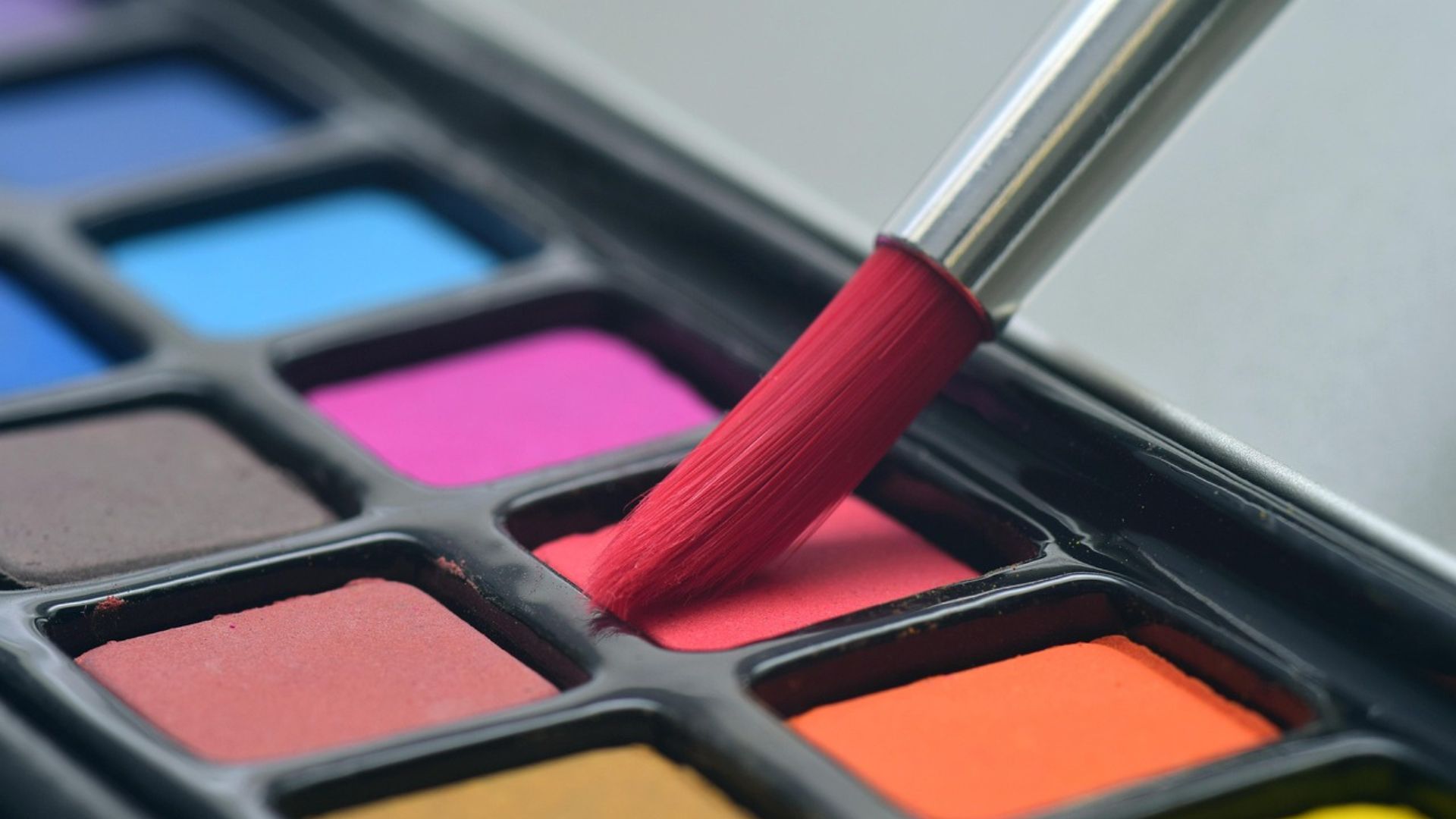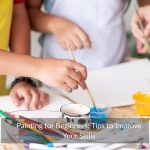
Painting is one of the most expressive and rewarding forms of art. Whether you’re working with acrylics, watercolors, oils, or gouache, the creative process offers endless possibilities. However, even the most experienced artists encounter frustrating mistakes along the way. From poor brush control to muddy colors, these setbacks can derail your project and affect your confidence.
The good news? Most painting mistakes are avoidable with the right knowledge and preparation. In this blog, we’ll cover the most common painting mistakes artists make and how to avoid them, so you can enjoy a smoother, more satisfying creative journey.
1. Skipping the Planning Stage
The Mistake:
Jumping straight into painting without any sketch, reference, or concept.
How to Avoid It:
Even spontaneous or abstract paintings benefit from a little planning. Start with:
- A light sketch or outline to guide composition.
- Selecting a color palette in advance.
- Gathering reference images to maintain accuracy.
A clear plan helps prevent awkward proportions, poor balance, or unnecessary repainting later.
2. Using the Wrong Brush
The Mistake:
Using one type of brush for everything or choosing a brush that doesn’t suit your medium or technique.
How to Avoid It:
Different brushes serve different purposes. For example:
- Round brushes for details.
- Flat brushes for bold strokes and filling areas.
- Filberts for blending.
- Use synthetic brushes for acrylics and natural bristles for oils.
Invest in a variety of brushes, and take time to understand their strengths.
3. Overworking the Paint
The Mistake:
Continuing to blend or layer paint too much, especially in one area, causing colors to turn muddy or the paper to tear (in watercolor).
How to Avoid It:
- Know when to stop. Sometimes, less is more.
- Let layers dry between applications especially with acrylic and watercolor.
- For oils, practice wet-on-wet or wet-on-dry techniques intentionally.
A good habit is to step back often and evaluate your work with fresh eyes.
4. Not Letting Layers Dry
The Mistake:
Applying new layers before the previous ones are completely dry, which causes smudging or unwanted color mixing.
How to Avoid It:
Patience is key:
- With acrylics, wait a few minutes for thin layers to dry.
- With oils, drying time can take days—use mediums like linseed oil to control it.
- With watercolors, wait until the paper is fully dry before layering to avoid unwanted bleeding.
Consider using a hair dryer to speed up drying (but avoid overheating the surface).
5. Poor Color Mixing and Muddy Colors
The Mistake:
Mixing too many colors together, leading to dull or muddy results.
How to Avoid It:
- Limit your palette to 3-5 colors and mix from there.
- Understand color theory: opposites on the color wheel can neutralize each other.
- Always mix on a clean surface, and test colors on scrap paper before applying.
Use a color chart or mixing guide as a reference until you develop confidence.
6. Neglecting Backgrounds and Composition
The Mistake:
Focusing only on the subject and forgetting to plan or balance the background.
How to Avoid It:
- Consider the background first, it can influence how your subject appears.
- Use soft washes or gradients for backgrounds in watercolor or acrylic.
- Think about the rule of thirds and how negative space contributes to composition.
A good background enhances your subject, not competes with it.
7. Painting with Dirty Tools
The Mistake:
Not cleaning brushes or water between color changes, leading to color contamination.
How to Avoid It:
- Use two water containers (one for rinsing, one for clean water).
- Wipe your brush on a rag or paper towel before dipping into new colors.
- Clean brushes thoroughly after each session to extend their life.
8. Using Low-Quality Materials
The Mistake:
Choosing the cheapest paints, brushes, or canvases—often resulting in poor results.
How to Avoid It:
You don’t need the most expensive gear, but invest in mid-range materials:
- Artist-grade paint offers better pigment and longevity than student-grade.
- Decent brushes retain their shape and don’t shed bristles.
- Use acid-free paper or primed canvas for better texture and durability.
Better tools = better results, especially as you progress.
9. Ignoring Light and Shadows
The Mistake:
Flat, unrealistic results because the light source isn’t considered.
How to Avoid It:
- Decide where the light source is in your composition.
- Add highlights and shadows accordingly.
- Use values (light and dark tones) to create depth and dimension.
Practicing with black-and-white studies can help train your eye for contrast.
10. Giving Up Too Soon
The Mistake:
Getting discouraged and abandoning paintings when they hit the “ugly stage.”
How to Avoid It:
Almost every painting goes through a rough patch. Don’t panic!
- Take breaks and come back with fresh eyes.
- Add details gradually.
- Trust the process, and remember that every artist struggles sometimes.
Finished is better than perfect—and you’ll learn more by completing your work.

Final Thoughts
Making mistakes is a natural part of the painting process. In fact, it’s often how we learn and grow. But by understanding these common pitfalls and how to avoid them, you can create more confidently and enjoyably.
To summarize:
- Plan before you paint.
- Use the right tools and materials.
- Be patient with layers and drying.
- Pay attention to composition, color, and light.
Most importantly, keep painting. Mistakes aren’t failures—they’re stepping stones to mastering your craft.
Errores de pintura comunes y cómo evitarlos | Isabel Zaman
La pintura es una de las formas de arte más expresivas y gratificantes. Ya sea que esté trabajando con acrílicos, acuarelas, aceites o gouache, el proceso creativo ofrece infinitas posibilidades. Sin embargo, incluso los artistas más experimentados se encuentran con errores frustrantes en el camino. Desde el mal control de pincel hasta los colores fangosos, estos contratiempos pueden descarrilar su proyecto y afectar su confianza.
¿La buena noticia? La mayoría de los errores de pintura son evitables con el conocimiento y la preparación correctos. En este blog, cubriremos los errores de pintura más comunes que cometen los artistas y cómo evitarlos, para que pueda disfrutar de un viaje creativo más suave y satisfactorio.
1. Omitir la etapa de planificación
El error:
Saltar directamente a la pintura sin ningún boceto, referencia o concepto.
Cómo evitarlo:
Incluso las pinturas espontáneas o abstractas se benefician de un poco de planificación. Empiece con:
- Un boceto o contorno ligero para guiar la composición.
- Seleccionando una paleta de colores por adelantado.
- Recopilar imágenes de referencia para mantener la precisión.
- Un plan claro ayuda a prevenir proporciones incómodas, mal equilibrio o repintado innecesario más tarde
2. Usando el pincel incorrect
El error:
Usar un tipo de pincel para todo o elegir un pincel que no se adapte a su medio o técnica.
Cómo evitarlo:
Diferentes cepillos sirven diferentes propósitos. Por ejemplo:
- Cepillos redondos para más detalles.
- Cepillos planos para trazos audaces y áreas de llenado.
- Filberts para mezclar.
- Use cepillos sintéticos para acrílicos y cerdas naturales para aceites.
- Invierta en una variedad de pinceles y tómese el tiempo para comprender sus fortalezas.
3. Operando la pintura
El error:
Continuar mezclando o en capas de pintura demasiado, especialmente en un área, haciendo que los colores se vuelvan embarrados o el papel se desgarre (en acuarela).
Cómo evitarlo:
- Sepa cuándo detenerse. A veces, menos es más.
- Deje que las capas se sequen entre aplicaciones, especialmente con acrílico y acuarela.
- Para los aceites, practique técnicas húmedas o húmedas intencionalmente.
Un buen hábito es dar un paso atrás a menudo y evaluar su trabajo con ojos frescos.
4. No dejar que las capas se sequen
El error:
Aplicar nuevas capas antes de las anteriores están completamente secas, lo que causa manchas o mezcla de colores no deseados.
Cómo evitarlo:
La paciencia es clave:
- Con acrílicos, espere unos minutos para que se sequen las capas delgadas.
- Con los aceites, el tiempo de secado puede llevar días, use medios como el aceite de linaza para controlarlo.
- Con acuarelas, espere hasta que el papel esté completamente seco antes de capas para evitar el sangrado no deseado.
- Considere usar un secador de pelo para acelerar el secado (pero evite sobrecalentarse de la superficie).
5. Mezcla de color deficiente y colores fangosos
El error:
Mezclar demasiados colores, lo que lleva a resultados opacos o embarrados.
Cómo evitarlo:
- Limite su paleta a 3-5 colores y mezcle desde allí.
- Comprender la teoría del color: los opuestos en la rueda de colores pueden neutralizarse entre sí.
- Mezcle siempre una superficie limpia y pruebe los colores en papel de desecho antes de aplicar.
- Use un gráfico de color o una guía de mezcla como referencia hasta que desarrolle confianza.
6. Descuidar los antecedentes y la composición
El error:
Centrarse solo en el tema y olvidar planificar o equilibrar los antecedentes.
Cómo evitarlo:
- Considere primero los antecedentes, puede influir en cómo aparece su tema.
- Use lavados o gradientes suaves para fondos en acuarela o acrílico.
- Piense en la regla de los tercios y cómo el espacio negativo contribuye a la composición.
- Un buen fondo mejora su tema, no compite con él.
7. Pintura con herramientas sucias
El error:
No limpiar los cepillos o el agua entre los cambios de color, lo que lleva a la contaminación del color.
Cómo evitarlo:
- Use dos recipientes de agua (uno para enjuague, uno para agua limpia).
- Limpie su cepillo sobre un trapo o una toalla de papel antes de sumergirse en nuevos colores.
- Limpie los cepillos a fondo después de cada sesión para extender su vida.
8. Uso de materiales de baja calidad
El error:
Elegir las pinturas, cepillos o lienzos más baratos, a menudo, lo que resulta en malos resultados.
Cómo evitarlo:
No necesita el equipo más caro, pero invierta en materiales de rango medio:
- La pintura de grado de artista ofrece un mejor pigmento y longevidad que el grado de alumno.
- Los cepillos decentes conservan su forma y no arrojan cerdas.
- Use papel sin ácido o lienzo preparado para una mejor textura y durabilidad.
Mejores herramientas = mejores resultados, especialmente a medida que avanza.
9. Ignorando la luz y las sombras
El error:
Resultados planos y poco realistas porque no se considera la fuente de luz.
Cómo evitarlo:
- Decide dónde está la fuente de luz en tu composición.
- Agregue reflejos y sombras en consecuencia.
- Use valores (tonos claros y oscuros) para crear profundidad y dimensión.
- Practicar con estudios en blanco y negro puede ayudarlo a entrenar su ojo para contraste.
10. Renunciar demasiado pronto
El error:
Desanimarse y abandonar pinturas cuando llegan al “feo escenario”.
Cómo evitarlo:
Casi todas las pinturas pasan por un parche difícil. ¡No entrar en pánico!
- Tome descansos y regrese con ojos frescos.
- Agregue detalles gradualmente.
- Confía en el proceso y recuerda que cada artista a veces lucha.
- Terminado es mejor que perfecto, y aprenderá más completando su trabajo.
Pensamientos finales
Cometer errores es una parte natural del proceso de pintura. De hecho, a menudo es cómo aprendemos y crecemos. Pero al comprender estas trampas comunes y cómo evitarlas, puede crear con mayor confianza y agradable.
Para resumir:
- Planifique antes de pintar.
- Use las herramientas y materiales adecuados.
- Sea paciente con capas y secado.
- Presta atención a la composición, el color y la luz.
Lo más importante, sigue pintando. Los errores no son fallas: están pasando piedras para dominar su oficio.




